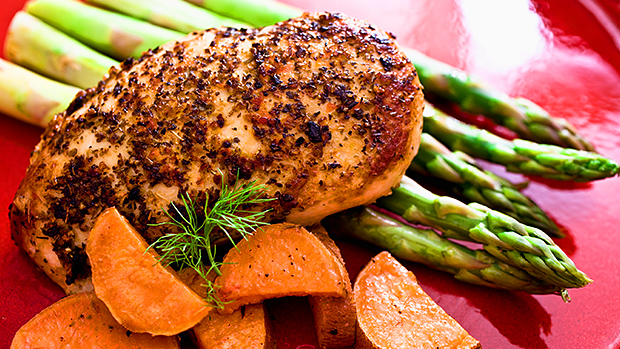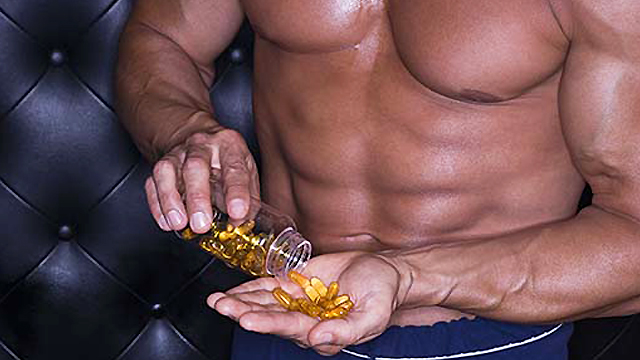I've been advocating a particular meal strategy for years, but there wasn't all that much good research to back me up. Regardless, I couched my basic premise in an analogy:
Carbohydrate is like uranium in a nuclear reaction, and protein, fat, and fiber are the control rods with which you regulate the reaction. No "control rod," (protein, fat, or fiber) and the "nuclear reaction" runs amok. "Radiation" (insulin) levels skyrocket and you soon wake up with a waistline that looks like Godzilla's.
The clues were always there (including some research), though, and I'd done a lot of experiments on myself using a simple glucometer and some test strips. The experiments revealed that in order to reduce the insulin response to carbohydrates, I had to eat the carbs with protein and/or fiber.
Later, I figured out that eating these two macronutrients together wasn't enough; I had to eat protein or fiber (or even fat) before I ate carbs.
Serendipitously, I stumbled on some recent research where scientists took that premise and ran with it. They not only confirmed that you have to eat carbs last in a meal to modulate the insulin response, but they figured out exactly how much time should elapse before eating carbs after protein and how large the insulin modulating effect was.
They also proved that like protein (and probably fat), fibrous vegetables are an equally effective "nuclear control rod," as they too mitigate the insulin response to carbs.
What They Did
The research group, led by Alpanna Shukla, rounded up 16 subjects with type II diabetes. All 16 consumed isocaloric meals of the same macronutrient composition on three separate days, one week apart, after a 12-hour fast. The three meals were based on the following conditions:
- Participants ate carbs first (ciabatta bread and orange juice) over a 10-minute period. They then rested 10 minutes before eating protein (skinless chicken breast) and vegetables (lettuce, tomato, and cucumber with Italian vinaigrette), again over a 10-minute period.
- Participants ate carbs last. They started with protein and vegetables eaten over a 10-minute period, followed by a 10-minute rest period, and then finished off with the carbs (bread and orange juice), again eaten over a 10-minute period.
- Participants had all the macronutrients together in a sandwich, one half of the sandwich eaten over a 10-minute period with orange juice, followed by a 10-minute rest period, and then finished up by eating the other half of the sandwich and second half-glass of orange juice.
All study participants had blood drawn just before mealtime and at 30-minute intervals up to 3 hours after the start of the meal.
What They Found
Eating carbs last slowed down the insulin response as effectively as acarbose and nateglinide, two commonly used blood-sugar drugs. The 30-minute glucose peaks were 53.8% and 40.4% lower for the carbs-last meal than the carbs-first meal and the sandwich meal, respectively.
The researchers figured that reduced insulin response had to do with "delayed gastric emptying." More precisely, the fiber in the vegetables was acting like the "nuclear reaction control rods" in my opening analogy.
When something interfered with the carbs getting into the bloodstream, whether it was by way of eating them after protein and vegetables or eating them at the same time as protein and vegetables, the insulin response was muted.
How to Use This Info
Getting your body to use insulin more efficiently, or, as was the case in this study, getting insulin levels to be reduced (and regulated), is maybe the most important thing involved in getting lean and staying lean. And while this study involved diabetics, the principles are almost certainly the same for non-diabetics, too.
Luckily, the strategy proposed in this tip is incredibly easy to adopt. Don't be daunted by the 10-minute "rest intervals" that were part of the study protocol, though, because you can employ the same strategy without actually putting your fork down.
Let's take a typical healthy meal of carbs, protein and veggies: maybe a sweet potato, a chicken breast, and some steamed broccoli. Rather than adopting the usual strategy of taking a bite of this, a bite of that, and then a bite of something else, just start your meal with the broccoli or whatever fibrous vegetable is sitting on your plate.
Eat it slowly, as you should anyhow. Chomp on it. Eat it all. Then move onto your chicken breast, again eating it slowly and leisurely until you've finished it.
After both of the first two courses have been eaten, tackle the sweet potato with the assurance that this high-carb vegetable isn't going to cause a big release of insulin and sabotage your efforts to stay lean.
If this is too anal for you, at the very least eat some protein and fibrous vegetable first, before you start sampling the carbs on your plate. This will approximate the "eating everything together" represented by the sandwich scenario in the study.
What could be simpler?
Source
- Shukla AP, Andono J, Touhamy SH, et al. "Carbohydrate-last meal pattern lowers postprandial glucose and insulin excursions in type 2 diabetes," BMJ Open Diab Res Care 2017;5:e000440. doi:10.1136/ bmjdrc-2017-000440.





